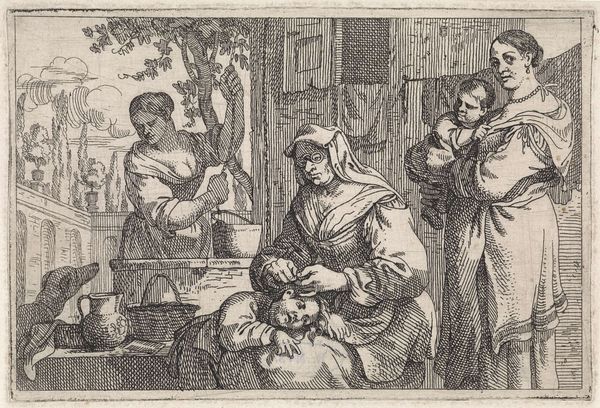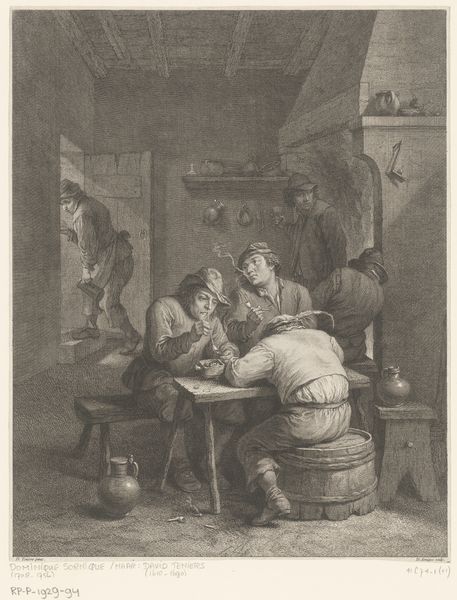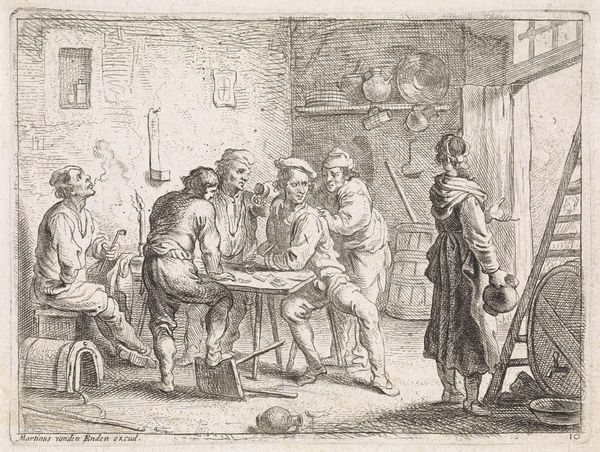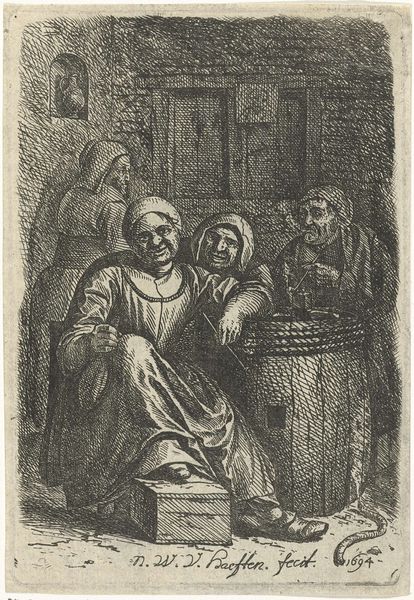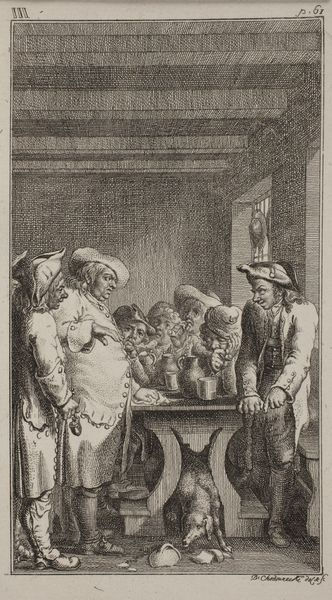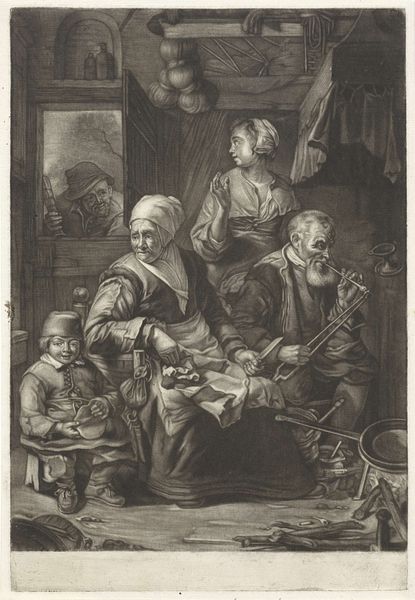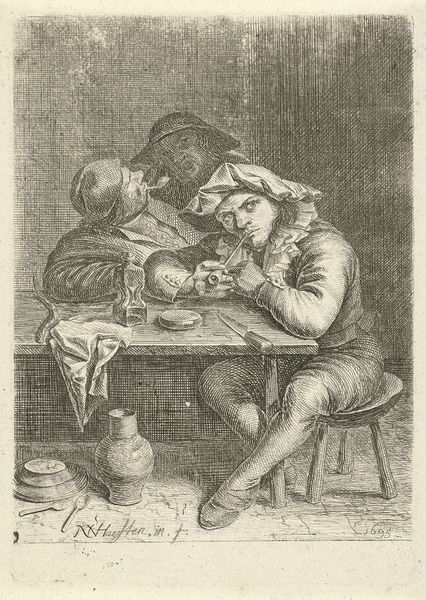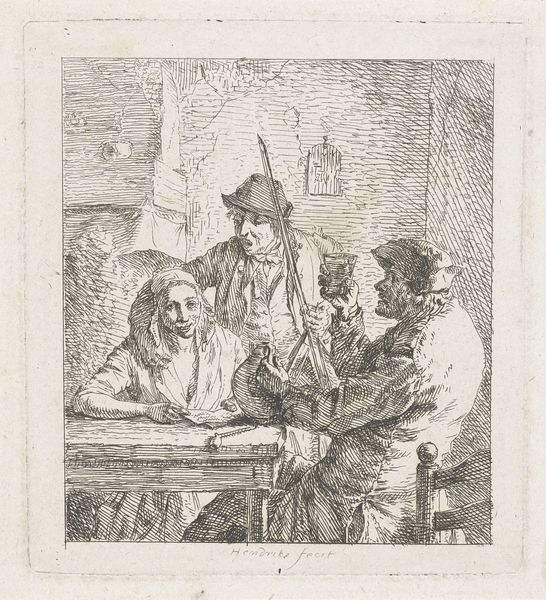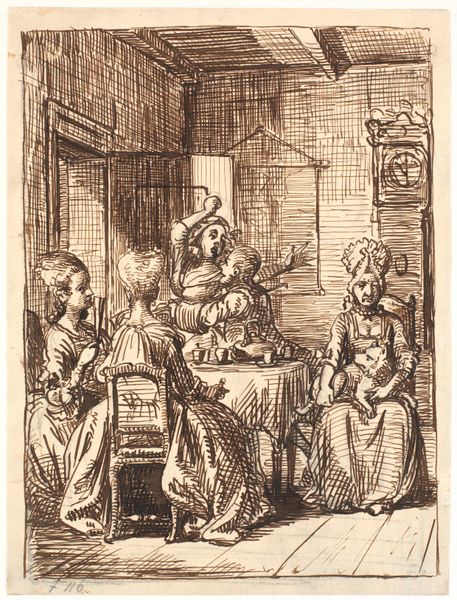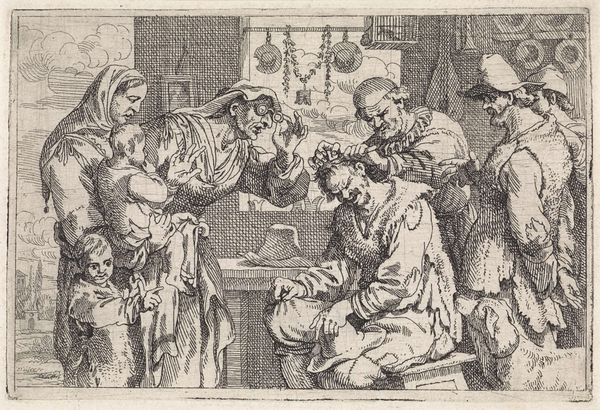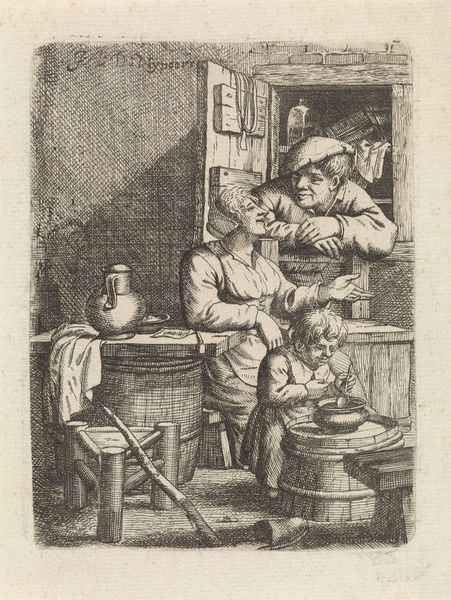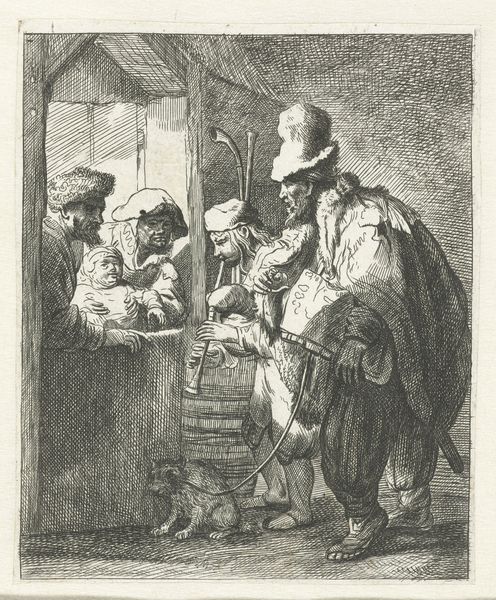
etching
#
narrative-art
#
dutch-golden-age
#
etching
#
figuration
#
genre-painting
Dimensions: height 174 mm, width 122 mm
Copyright: Rijks Museum: Open Domain
Curator: Nicolaes van Haeften’s 1694 etching, “Three Old Women Eating at a Table”, presents a genre scene steeped in the everyday realities of 17th-century Dutch life. What's your initial read of the piece? Editor: My first impression is one of austerity. It's all so functional, focused on basic survival and daily labor. Look at the detail etched into the various textures of the table, clothing, even the brickwork. There is very little here to be seen as superfluous; almost everything has a purpose. Curator: Absolutely. Haeften isn't just depicting a meal; he's illustrating a particular moment in the lives of women, likely from a lower socio-economic class. This depiction invites us to question how societal structures often limit the autonomy of women, placing them at the center of a politics of precarity and survival, in a way we can relate to even today. Editor: Exactly. The materials—etching on paper—reinforce this sense of access and dissemination. Etchings are easily reproduced, bringing these images to a broader audience than, say, an oil painting in a wealthy home could ever reach. These depictions had a value as social commentary in the making. Curator: Yes, and considering that Haeften was active during the Dutch Golden Age, a period marked by significant economic prosperity for some, this piece seems to counter those dominant narratives, turning our gaze towards a demographic that existed outside of that glittering sphere of success. Editor: There is a realness, in all the lines and shadows that highlight the stark living conditions of these figures. Look at the clay jugs stored above the table – a reliance on utilitarian, humble materials for the processes of preparing and eating a meal. Curator: I agree. And what I see is also that the act of communal eating, though borne from hardship, speaks to the significance of gathering for these women—a silent, yet important form of resistance and connection, fostering a unique sort of strength and resilience. This makes a statement about human connection. Editor: Ultimately, it feels like Haeften’s process wasn’t just about documenting life, but about quietly advocating for awareness, shifting our attention to the labor, the resilience, and the materials of a life too easily overlooked. Curator: Agreed. A powerful testament to art’s capacity to spotlight narratives beyond the grand spectacle.
Comments
No comments
Be the first to comment and join the conversation on the ultimate creative platform.
